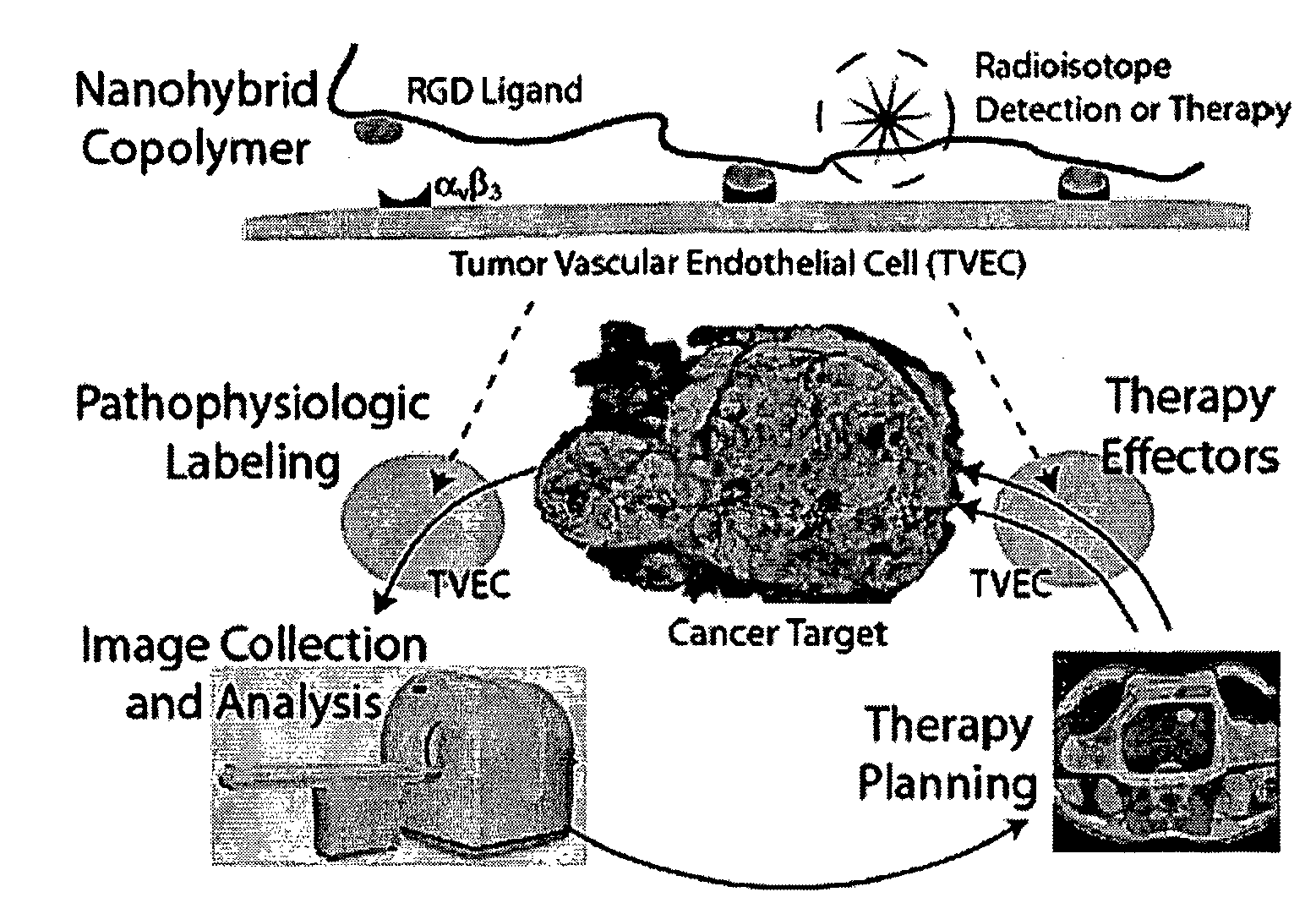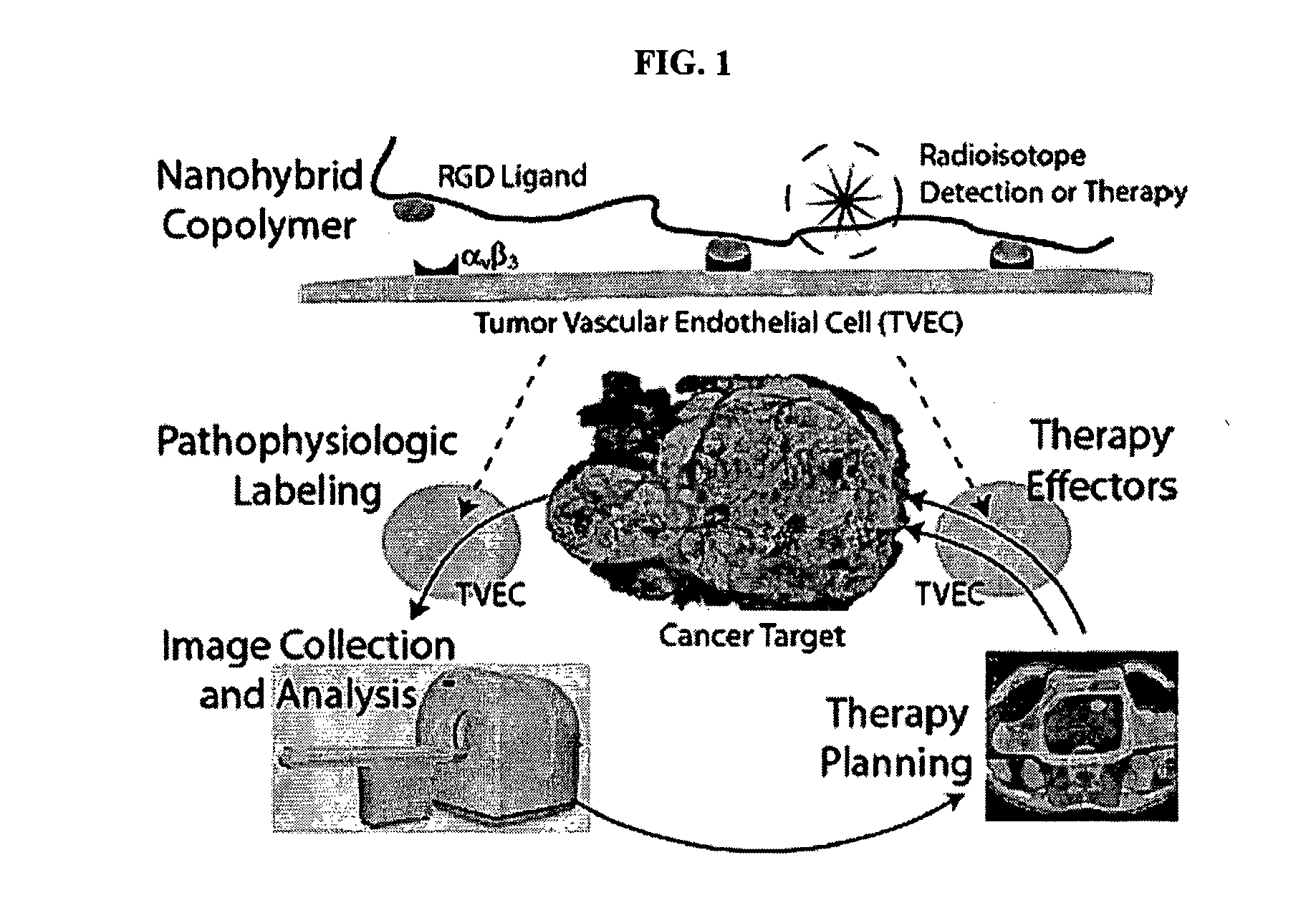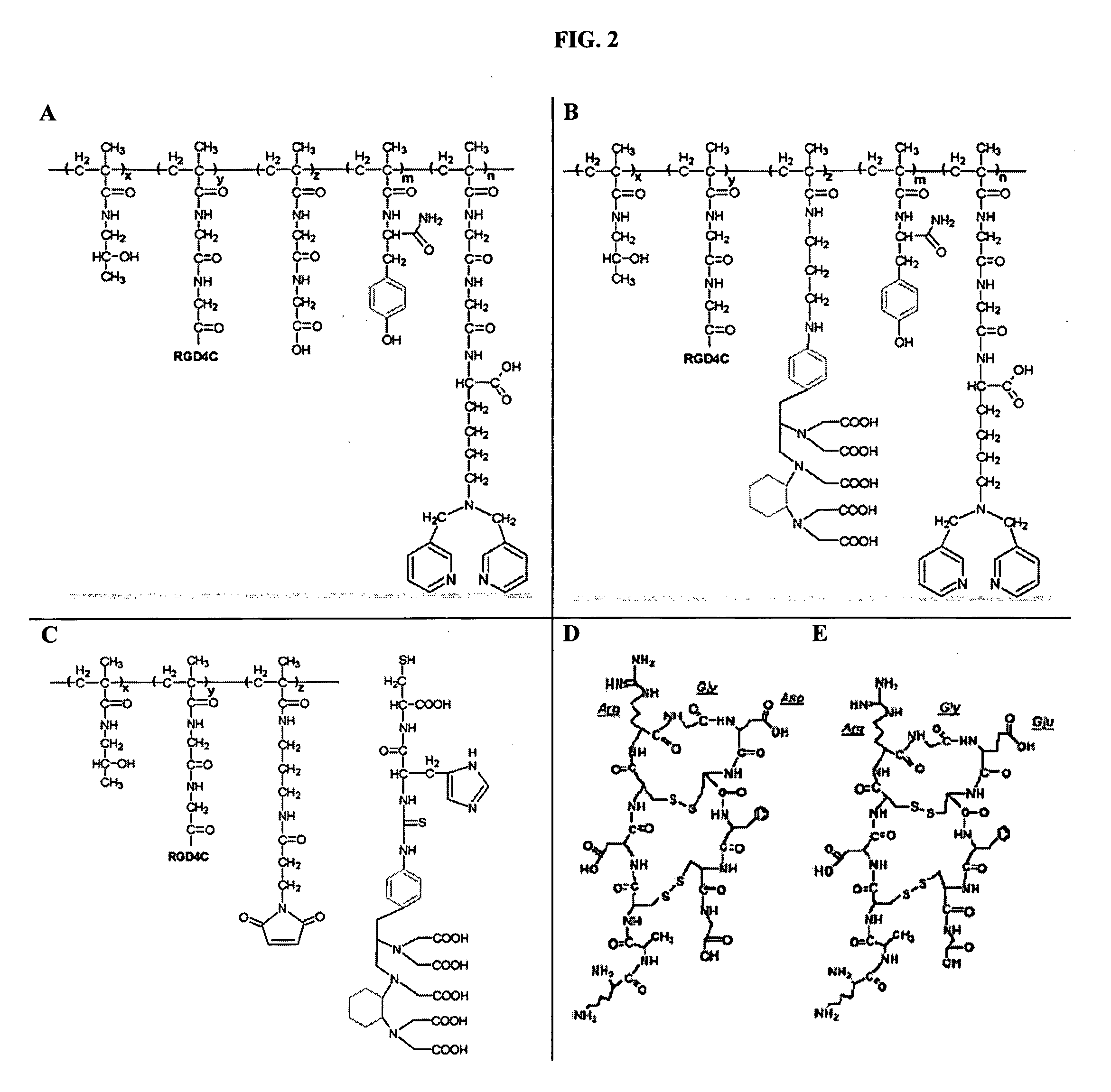Radiolabeled Nanohybrids Targeting Solid Tumor Neovasculature and Method of Using Same
- Summary
- Abstract
- Description
- Claims
- Application Information
AI Technical Summary
Benefits of technology
Problems solved by technology
Method used
Image
Examples
example
[0085]An HPMA copolymer was constructed with high electronegative charge to reduce liver and spleen localization. A molecular weight of about 40 kD was chosen to provide an intermediate circulation time to enhance targeting, yet retain a relatively rapid clearance to reduce non-tumor tissue residence time. The electronegative charge was introduced using the comonomer APMA-CHX-A″-DTPA. The final nanohybrid conjugate had a polydispersity of 1.42 and a MW=43.3 kD by SEC. The molecule contained 0.179 mmol / gm DPK, 0.077 mmol / gm Tyr, and 0.377 mmol / gm RGD4C by amino acid analysis. There was a mean of 16.3 RGD4C peptides per polymeric backbone.
[0086]Yttrium-90 was chosen as the therapy isotope because of its attractive physical parameters (bmax=2.27 MeV, T1 / 2=64 hr, X90 [radius of sphere containing 90% of emitted energy]=5.34 mm) and because it binds very stably with CHX-DTPA. Three 90Y treatment doses were chosen based on maximum tolerated dose levels defined in earlier studies of 90Y rad...
PUM
| Property | Measurement | Unit |
|---|---|---|
| Mass | aaaaa | aaaaa |
| Mass | aaaaa | aaaaa |
| Current | aaaaa | aaaaa |
Abstract
Description
Claims
Application Information
 Login to View More
Login to View More - R&D
- Intellectual Property
- Life Sciences
- Materials
- Tech Scout
- Unparalleled Data Quality
- Higher Quality Content
- 60% Fewer Hallucinations
Browse by: Latest US Patents, China's latest patents, Technical Efficacy Thesaurus, Application Domain, Technology Topic, Popular Technical Reports.
© 2025 PatSnap. All rights reserved.Legal|Privacy policy|Modern Slavery Act Transparency Statement|Sitemap|About US| Contact US: help@patsnap.com



